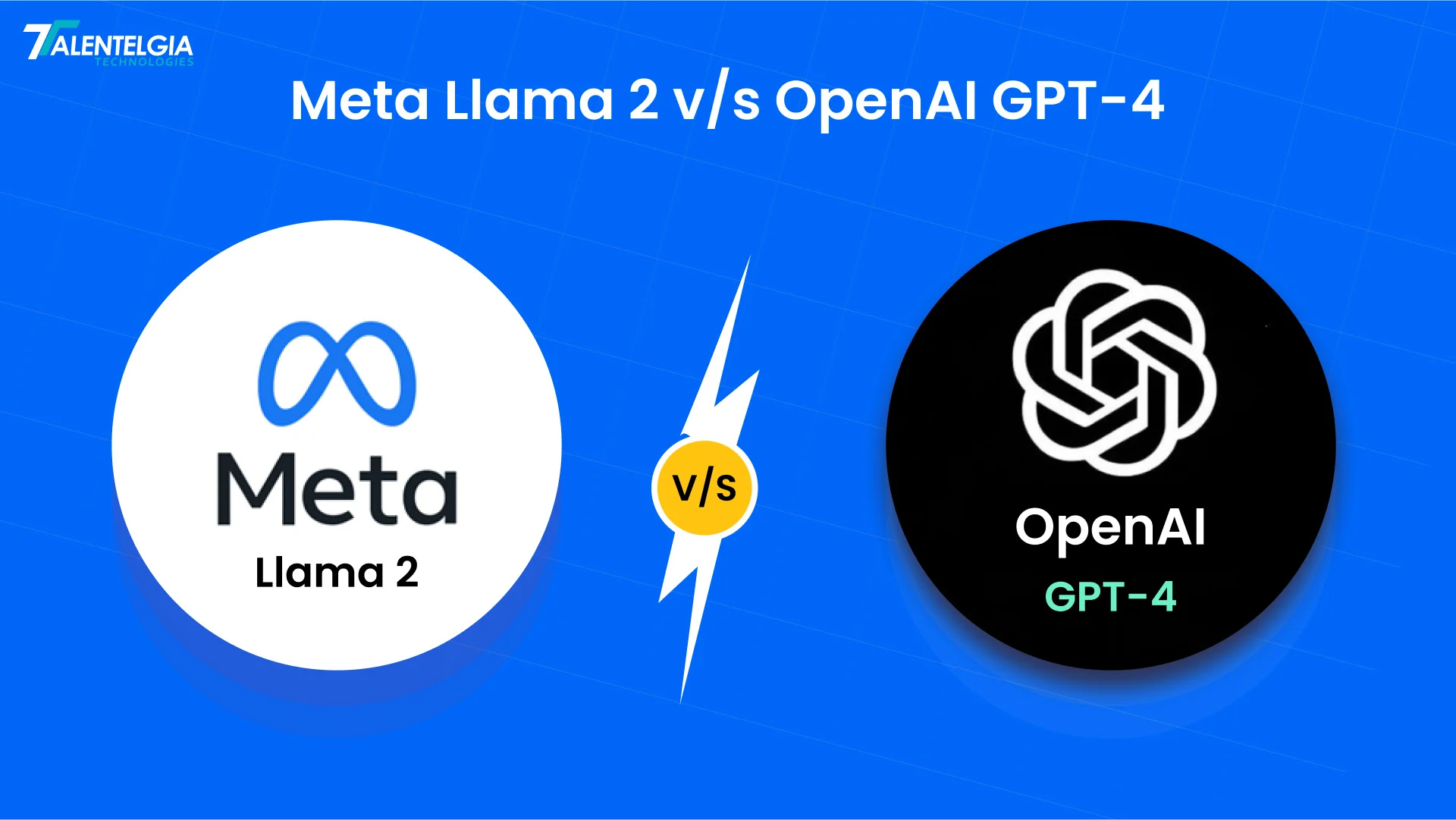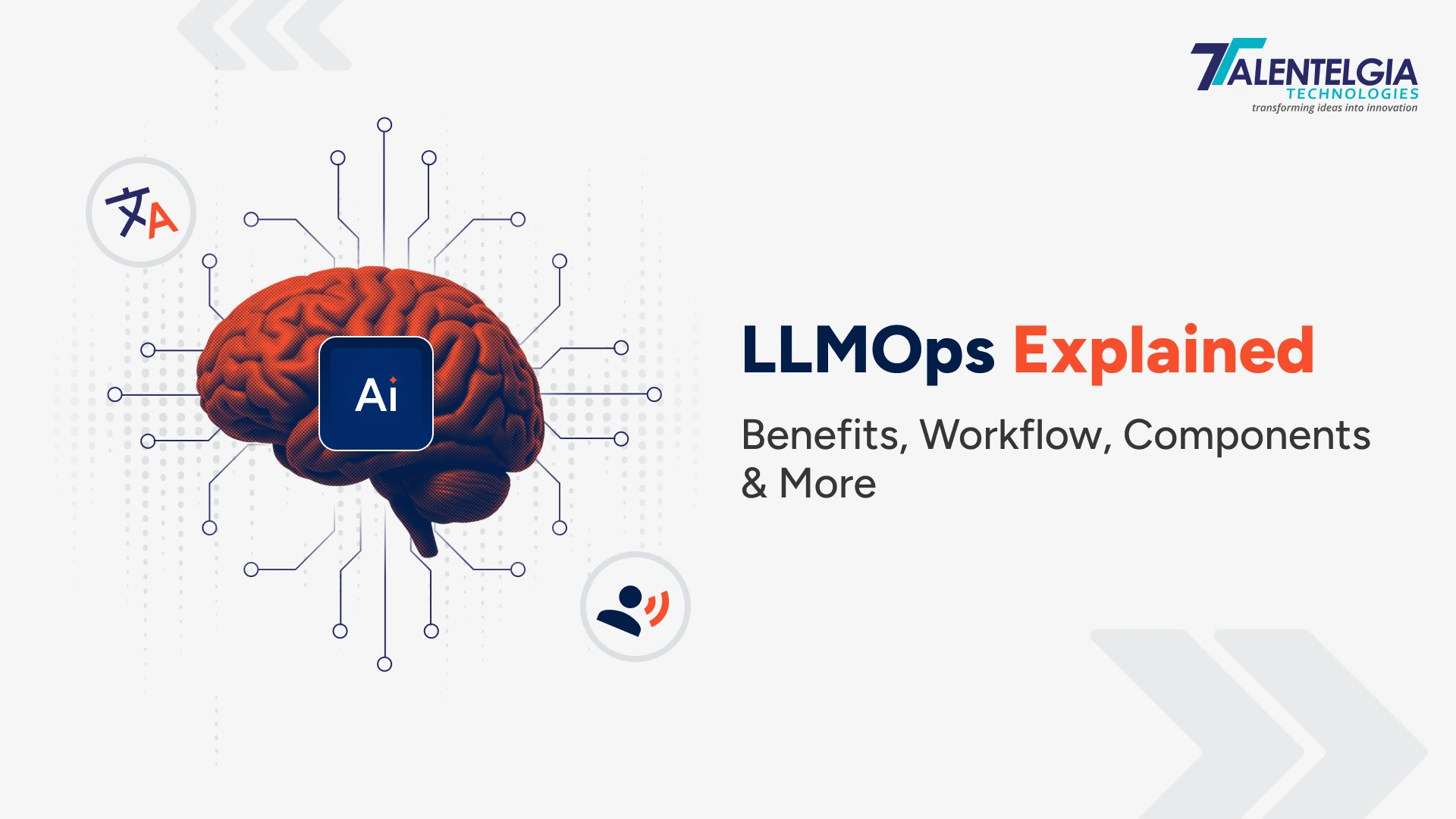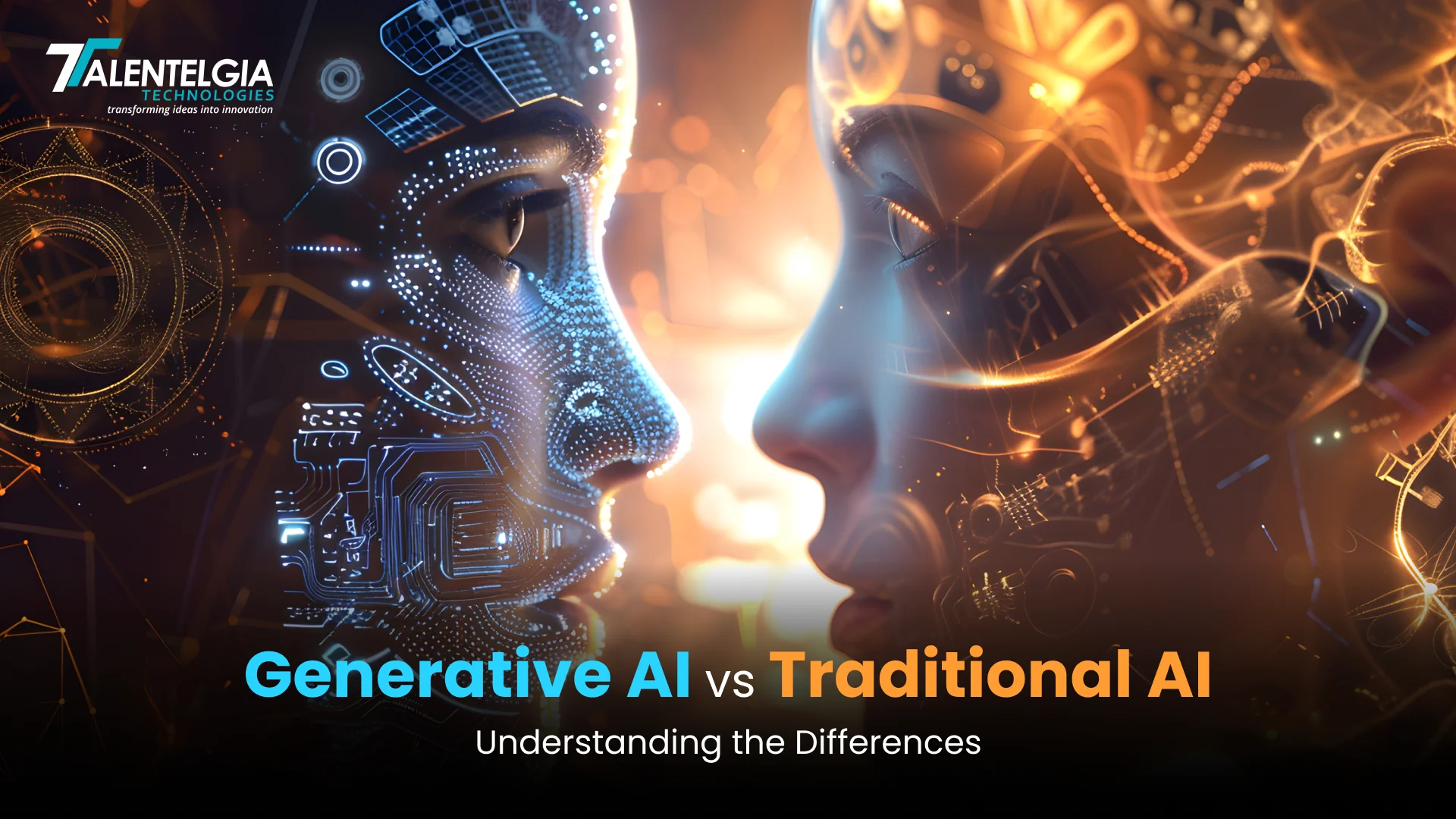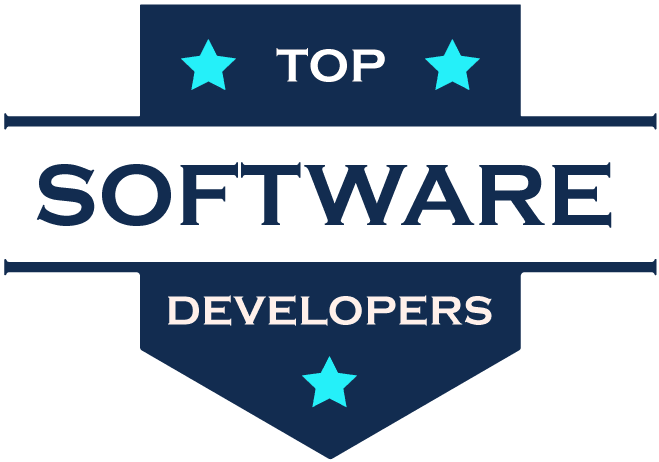Artificial Intelligence is no longer a concept from a “Sci-fi Movie” or a “Fantasy Novel” set in a futuristic world—it is reality! From driving smarter decisions in business and science to enabling new frontiers in human-computer interaction, AI is rapidly becoming the backbone of innovation! The rivalry in the field of large language models (LLMs) has intensified with the emergence of two formidable contenders, each with unique features and remarkable advantages.
On one hand, we have GPT-4, the latest model from OpenAI, which is known for its sheer scale and unprecedented ability to analyze text and even images, making it a multifunctional tool for numerous applications. On the other hand, we have Llama 2, a joint venture between Microsoft and Meta, which stands out with its exceptional multilingual capabilities and computational efficiency, as well as its open-source nature that invites researchers and developers to play around with it.
So, in this detailed comparison analysis blog, we will examine the fundamental differences between Llama vs. GPT that will reveal their unique characteristics and implications in the ever-growing field of AI and NLP.
Understanding Llama & GPT: A Brief Overview
AI is no longer a buzzword— it’s reforming the rules of business operations, pushing the boundaries of research, and revolutionizing human-tech interaction. New models like DeepSeek-R1 and established ones like Llama and GPT-4 are leaders in the field. The focus of these tools goes beyond technology to resolving issues that genuinely matter and achieving impactful change. It is essential to know the models’ strengths, practical use cases, and how they work, so that you can choose the right one.
| Features | Llama 2 | GPT-4 |
|---|---|---|
| Suitable for factual summarization (near GPT-4 levels in some cases), efficient for internal apps, and strong for cost-sensitive projects. | Open-source, foundational LLM (text only) | Proprietary, closed-sourced Multimodal LLM (text, image, audio) |
| Supported Languages | ~20 languages (strongest in English, limited multilingual) | 50+ languages with high accuracy across major ones |
| Pricing | Free for research and commercial use (with conditions); costs mainly come from hosting via cloud providers (eg: Google Cloud Vertex AI, AWS Bedrock, with various per-token rates) | Subscription-based (ChatGPT Plus: $20/month); API usage priced per 1K tokens |
| User Reviews | Praised for transparency, customizability, and research flexibility | Praised for superior general performance, creativity, and complex reasoning |
| Efficacy | Suitable for factual summarization (near GPT-4 levels in some cases), efficient for internal apps, and strong for cost-sensitive projects. | Excels in complex reasoning, coding, creativity, and multimodal understanding. Strongest general-purpose LLM for advanced tasks. |
| Benchmark | Suitable for factual summarization (near GPT-4 levels in some cases), efficient for internal apps, and strong for cost-sensitive projects. | Superior across most benchmarks (MMLU, Big-Bench, GSM8K, HumanEval) with wide generalization |
What is Llama 2?
Meta released Llama 2 on July 18, 2023, as the successor to the initial Llama model. Since then, Meta and Microsoft have collaborated to focus on the model’s development as part of the broader GPT model versions. Similar to its predecessors, Llama 2 is available in 3 sizes— 7B, 13B, and 70B parameters, each offering both pre-trained and fine-tuned variants. There were plans to release a version with 34B parameters; however, it still remains unpublished. Some speculate that it is due to security reasons since one of the graphs in the Llama 2 model research papers displayed 34B as an outlier, saying “safety human evaluation results.”
Meta released LLaMA’s first version in July 2023, marking the launch of LLaMA 2. Since then, Meta and Microsoft have formed a partnership that focuses on AI development and alignment with the Microsoft ecosystem as part of the broader GPT family of models.
Is Llama Open Source?
Yes! Unlike GPTs, Llama 2 is an open-source LLM model, free for business and research purposes.
| Model | Pre-Trained Tokens | Context Length | Pre-Trained Tokens | Key Features |
|---|---|---|---|---|
| 7B | 7 billion | 4096 tokens | 2 trillion | Lightweight, suited for small devices and quick responses |
| 13B | 13 billion | 4096 tokens | 2 trillion | Balanced performance; ideal for mid-scale applications |
| 70B | 70 billion | 4096 tokens | 2 trillion | Top-tier open-source chat model with GQA for efficient inference |
What is GPT–4?
OpenAI released GPT-4 in March 2023, which enabled tremendous advancement in the field of large language models (LLMs). While it does use GPT-3.5’s strengths as a foundation, what truly sets GPT-4 apart is its unique skill to process images and audio files in addition to text data. This image and audio processing ability, alongside text, makes it an extremely versatile tool with numerous potential applications and expands its usefulness far beyond what the initial iterations of the tool offered.
As a result, the GPT–4 model is now able to blend and interpret textual and visual components, making it possible to apply this technology in many thrilling industries. Few tasks include generating captions for images or assisting with content creation for visually rich platforms, as it can use context-enhanced natural language understanding and generation capabilities.
Is GPT Open Source?
No! GPT models are not open source— they are subscription-based Multimodal LLMs that make it ideal for advanced applications and large-scale use. (Refer to our other blog to know ChatGPT’s pricing structure)
| Model | Context length | Parameters | Key Features |
|---|---|---|---|
| GPT-4 | 8K or 32K tokens | ~1.7T (Mixture of Experts) | Multimodal (text+image), high reasoning ability, low hallucinations |
| GPT-4 Turbo | 128K tokens | varies | Faster & cheaper than GPT-4, ideal for high-volume chat use |
| GPT-4o | 128K tokens | varies | Native support for text, image, audio, and real‑time multimodal interactions |
| GPT-4o mini | 128K tokens | varies | Ultra-low cost, highly efficient for simpler tasks, replaces GPT-3.5 Turbo for many use cases. |
Llama 2 vs. GPT-4 Architecture: What are Their Key Differences?
Between Meta’s Llama 2 and OpenAI’s GPTs, there are many differences because GPTs are larger than the Llama model. However, the size difference alone does not justify the question of whether Meta’s model is better or worse than OpenAI’s flagship model. Each language model has unique advantages and disadvantages, and their effectiveness in understanding, processing, and generating natural language varies based on the specific tasks at hand.
Therefore, the optimal model for your project is best determined by how you intend to use it and the specific requirements associated with that use case. Now let us move on to the 9 parameters that differentiate both Llama vs GPT architectures:
Model Size
Llama 2: The parameters for Llama 2 include 7 billion, 13 billion, and 70 billion parameters. Nevertheless, even the largest variant of Llama 2, which boasts 70 billion parameters, is dwarfed by the potential scope of GPT-4. The model size of Llama 2 is, indeed, much smaller.
GPT-4: While OpenAI has not officially published the parameter count for GPT-4, it’s estimated to fall between 1 to 1.76 trillion parameters (sources: OpenAI, Exploding Topics). Some experts even speculate that it is composed of eight models, each containing 220 billion parameters, making it substantially greater than Llama 2.
Multilinguinism
Llama 2: Llama 2 strives to excel in many languages. Its strong multilingual competencies make it a good candidate for projects that need support for multiple languages.
GPT-4: On the other hand, GPT-4 has English as its primary focus. As a result, it often struggles with other languages. In cases where other languages are used, GPT-4 performs poorly.
Token Limit
Llama 2: Llama 2 has approximately the same token limit as the base version of GPT-3.5. As such, its ability to process and generate text is limited when compared to that of GPT-4.
GPT-4: As compared to Llama 2, GPT-4 offers models with a significantly larger token limit. Although the exact token limit is not disclosed, it is stated that the base version of GPT-4 accommodates two times the token limit of GPT-3.5-turbo, meaning it has the capacity to accept and produce more to process and generate text.
Creativity
Llama 2: Although Llama 2 can also produce creative text, it is considered that its level of creativity is not as advanced as that of GPT-4. The outputs tend to resemble those of an elementary or high school level.
GPT-4: Generating text with GPT-4 has earned it a reputation for being exceptionally creative as it can generate content in the form of poems using rich vocabulary, metaphors, and varied forms of expressions similar to a seasoned writer.
Task Complexity & Accuracy
Llama 2: Llama 2 has achieved a remarkable level of accuracy and competes quite well with GPT-3.5 models. It uses a patented method called Ghost Attention (GAtt) to improve precision and control throughout the conversation. Still, it is pretty unlikely that Llama 2 could beat GPT-4 in the most complex tasks.
GPT-4: GPT-4 has better comparative outcomes than Llama 2 in almost all benchmarks, especially in more sophisticated tasks. It is known as a better sophisticated model, performing better in high-precision and complex tasks than Llama models.
Speed & Efficiency
Llama 2: Llama 2’s architectural enhancements, such as grouped-query attention, help it maintain a good balance between accuracy and inference speed, which increases efficiency. Llama 2 also outperforms other models in computational speed by having faster inference times and better resource utilization.
GPT-4: When compared to GPT-4, Llama 2 is seen as more resource-efficient and faster. In contrast, the bigger and more complex GPT-4 models may need more computational power, which can make them slower.
Usability
Llama 2: Now that Llama 2 is part of the ‘Hugging Face ecosystem,’ it is easier for most AI developers and researchers to access it. However, some larger organizations, such as Google, might still need to undergo some gatekeeping to use it.
GPT-4: Unlike other models developed by OpenAI, GPT-4 can be used via a commercial API. This API is intended for advanced developers with deep industry expertise. It is a proprietary closed-sourced model that is not as openly available as Llama.
Training Data
Llama 2: Llama 2 was trained from a smaller dataset of publicly available sources, with only 2 trillion tokens. Although it underwent data cleaning, update, and various technical improvements, the amount of training data fades in comparison to that of GPT-4.
GPT-4: In contrast, the training data for GPT-4 is estimated to have been trained on a massive dataset of nearly ~13 trillion tokens. Though the exact number of tokens used is not disclosed, it has undergone extensive training, which explains why it is able to sustain a wide knowledge base.
Performance Metrics
Llama 2: Benchmark data reveals that Llama 2 performs exceptionally well, especially the 70B model. It frequently competes against or surpasses GPT-3.5 in reading comprehension, summary generation, and commonsense reasoning, which is a notable achievement for open-source models.
GPT-4: GPT-4’s results dominate the industry and academic benchmarks like MMLU, HumanEval for coding, HellaSwag, and others. It often establishes new records and maintains its position as the most advanced general-purpose foundational model, used as a reference by other models.
So, Which Is The Best AI Tool, Llama or GPT?
After reviewing both the AI tools, we can say that both Llama and GPT model lineups can be considered as two sides of the AI development faces— Open-source and Closed-source!
They both exhibit best-in-class features, but they’re not the only two options you have in the market. In this post, we compared them to illustrate the difference between Llama and GPT and their development environments. We at Talentelgia hope that we have helped you decide which one is best for you. However, if you’re still uncertain which AI integration service you should implement in your work ecosystem, book a demo with us!


 Healthcare App Development Services
Healthcare App Development Services
 Real Estate Web Development Services
Real Estate Web Development Services
 E-Commerce App Development Services
E-Commerce App Development Services E-Commerce Web Development Services
E-Commerce Web Development Services Blockchain E-commerce Development Company
Blockchain E-commerce Development Company
 Fintech App Development Services
Fintech App Development Services Fintech Web Development
Fintech Web Development Blockchain Fintech Development Company
Blockchain Fintech Development Company
 E-Learning App Development Services
E-Learning App Development Services
 Restaurant App Development Company
Restaurant App Development Company
 Mobile Game Development Company
Mobile Game Development Company
 Travel App Development Company
Travel App Development Company
 Automotive Web Design
Automotive Web Design
 AI Traffic Management System
AI Traffic Management System
 AI Inventory Management Software
AI Inventory Management Software
 AI Software Development
AI Software Development  AI Development Company
AI Development Company  AI App Development Services
AI App Development Services  ChatGPT integration services
ChatGPT integration services  AI Integration Services
AI Integration Services  Generative AI Development Services
Generative AI Development Services  Natural Language Processing Company
Natural Language Processing Company Machine Learning Development
Machine Learning Development  Machine learning consulting services
Machine learning consulting services  Blockchain Development
Blockchain Development  Blockchain Software Development
Blockchain Software Development  Smart Contract Development Company
Smart Contract Development Company  NFT Marketplace Development Services
NFT Marketplace Development Services  Asset Tokenization Company
Asset Tokenization Company DeFi Wallet Development Company
DeFi Wallet Development Company Mobile App Development
Mobile App Development  IOS App Development
IOS App Development  Android App Development
Android App Development  Cross-Platform App Development
Cross-Platform App Development  Augmented Reality (AR) App Development
Augmented Reality (AR) App Development  Virtual Reality (VR) App Development
Virtual Reality (VR) App Development  Web App Development
Web App Development  SaaS App Development
SaaS App Development Flutter
Flutter  React Native
React Native  Swift (IOS)
Swift (IOS)  Kotlin (Android)
Kotlin (Android)  Mean Stack Development
Mean Stack Development  AngularJS Development
AngularJS Development  MongoDB Development
MongoDB Development  Nodejs Development
Nodejs Development  Database Development
Database Development Ruby on Rails Development
Ruby on Rails Development Expressjs Development
Expressjs Development  Full Stack Development
Full Stack Development  Web Development Services
Web Development Services  Laravel Development
Laravel Development  LAMP Development
LAMP Development  Custom PHP Development
Custom PHP Development  .Net Development
.Net Development  User Experience Design Services
User Experience Design Services  User Interface Design Services
User Interface Design Services  Automated Testing
Automated Testing  Manual Testing
Manual Testing  Digital Marketing Services
Digital Marketing Services 
 Ride-Sharing And Taxi Services
Ride-Sharing And Taxi Services Food Delivery Services
Food Delivery Services Grocery Delivery Services
Grocery Delivery Services Transportation And Logistics
Transportation And Logistics Car Wash App
Car Wash App Home Services App
Home Services App ERP Development Services
ERP Development Services CMS Development Services
CMS Development Services LMS Development
LMS Development CRM Development
CRM Development DevOps Development Services
DevOps Development Services AI Business Solutions
AI Business Solutions AI Cloud Solutions
AI Cloud Solutions AI Chatbot Development
AI Chatbot Development API Development
API Development Blockchain Product Development
Blockchain Product Development Cryptocurrency Wallet Development
Cryptocurrency Wallet Development About Talentelgia
About Talentelgia  Our Team
Our Team  Our Culture
Our Culture 
 Healthcare App Development Services
Healthcare App Development Services Real Estate Web Development Services
Real Estate Web Development Services E-Commerce App Development Services
E-Commerce App Development Services E-Commerce Web Development Services
E-Commerce Web Development Services Blockchain E-commerce
Development Company
Blockchain E-commerce
Development Company Fintech App Development Services
Fintech App Development Services Finance Web Development
Finance Web Development Blockchain Fintech
Development Company
Blockchain Fintech
Development Company E-Learning App Development Services
E-Learning App Development Services Restaurant App Development Company
Restaurant App Development Company Mobile Game Development Company
Mobile Game Development Company Travel App Development Company
Travel App Development Company Automotive Web Design
Automotive Web Design AI Traffic Management System
AI Traffic Management System AI Inventory Management Software
AI Inventory Management Software AI Software Development
AI Software Development AI Development Company
AI Development Company ChatGPT integration services
ChatGPT integration services AI Integration Services
AI Integration Services Machine Learning Development
Machine Learning Development Machine learning consulting services
Machine learning consulting services Blockchain Development
Blockchain Development Blockchain Software Development
Blockchain Software Development Smart contract development company
Smart contract development company NFT marketplace development services
NFT marketplace development services IOS App Development
IOS App Development Android App Development
Android App Development Cross-Platform App Development
Cross-Platform App Development Augmented Reality (AR) App
Development
Augmented Reality (AR) App
Development Virtual Reality (VR) App Development
Virtual Reality (VR) App Development Web App Development
Web App Development Flutter
Flutter React
Native
React
Native Swift
(IOS)
Swift
(IOS) Kotlin (Android)
Kotlin (Android) MEAN Stack Development
MEAN Stack Development AngularJS Development
AngularJS Development MongoDB Development
MongoDB Development Nodejs Development
Nodejs Development Database development services
Database development services Ruby on Rails Development services
Ruby on Rails Development services Expressjs Development
Expressjs Development Full Stack Development
Full Stack Development Web Development Services
Web Development Services Laravel Development
Laravel Development LAMP
Development
LAMP
Development Custom PHP Development
Custom PHP Development User Experience Design Services
User Experience Design Services User Interface Design Services
User Interface Design Services Automated Testing
Automated Testing Manual
Testing
Manual
Testing About Talentelgia
About Talentelgia Our Team
Our Team Our Culture
Our Culture

















 Write us on:
Write us on:  Business queries:
Business queries:  HR:
HR: 




